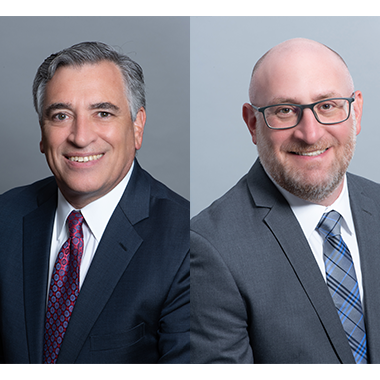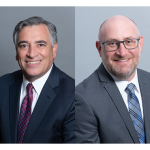On May 18, 2023, biotech innovation suffered at least a temporary setback in Amgen v Sanofi in which a unanimous Supreme Court affirmed the rulings of the district court and the Court of Appeals for the Federal Circuit holding that Amgen’s challenged patent claims, as Sanofi argued, failed to enable their full scopes and thereby rendered the claims invalid.
The invalidated Amgen claims are directed to antibodies that perform a specific function to effectuate a medical treatment outcome—here blocking a protein (PCSK9) that decreases the body’s ability to remove low-density lipoprotein (LDL) cholesterol, so-called “bad cholesterol,” by degrading LDL receptors (LDLR). Amgen’s patent claims covered not only Amgen’s anti-PCSK9 drug REPATHA, but also all other antibodies that bind to specific portions of the PCSK9 protein to block its ability to bind to LDLR.
Sanofi’s commercialized antibody PRALUENT is distinct from Amgen’s REPATHA antibody and is not specifically identified in Amgen’s patents. However, it does bind to a portion of PCSK9 that is identified in Amgen’s claims, and it blocks binding of PCSK9 to LDLR, and therefore it is covered by Amgen’s patent claims. The issue the Supreme Court addressed is whether Amgen is entitled to patent claims that cover potentially millions of antibodies where Amgen’s patents identify only 26 antibodies by their amino acid sequences and where Amgen provided a “roadmap” for the identification of other such antibodies.
Under patent law, inventors trade the disclosure of their inventions, including the knowledge of how to make and use them, in exchange for a government-granted monopoly permitting the inventor (or assignee) to exclude others from making, using and selling the invention for a term of years. “Enablement” is the term used to describe this disclosure of the knowledge of how to make and use the invention, and the failure to provide a disclosure that enables a person of ordinary skill in the art to make and use the full scope of the claimed invention is a basis for patent claim invalidity. The fact that some amount of additional experimentation may be required to make and use the full scope of the claimed invention is not, per se, invalidating, because the courts have held that even well-disclosed inventions may permit for reasonable experimentation. However, if “undue experimentation” would be required for a person of ordinary skill in the art to make and use the full scope of the claims, then the patent claims have not been adequately enabled, and are therefore invalid.
The Question of Enablement
The disclosure of biotech inventions, especially antibody inventions, demonstrates the difficulties of patent claiming where inventors discover and harness the powers of naturally occurring and man-made macromolecules to prevent and cure diseases. Amgen’s true discovery was that, by binding to particular regions of the PCSK9 protein, certain anti-PCSK9 antibodies can effectively block PCSK9’s ability to degrade LDLR, thereby providing a medical benefit. So, it was not the particular amino acid sequence of the anti-PCSK9 antibody that was critical, but rather the ability of an anti-PCSK9 antibody to bind to those regions of PCSK9.
The Supreme Court and Sanofi acknowledged that Amgen’s patents identified 26 specific antibodies that Amgen had invented that perform the functions claimed, namely binding to the specific regions of PCSK9 to block its ability to bind LDLR. But Amgen did not claim just those 26 specific antibodies. Instead, recognizing that other anti-PCSK9 antibodies could perform the same function and have the same effect, and that identifying and producing those additional antibodies was well within the skill of practitioners, Amgen claimed the invention more broadly, claiming the antibodies by function—“binding” or “blocking”—rather than by the structure (i.e., specific amino acid sequence) of the antibody. Prior to the Amgen decision, biotech patent practitioners used this method of claiming to broaden the power of their dense disclosures and sweep in more antibodies (and other macromolecules) than they had specifically identified in their own lab.
The court ultimately held that such functional claiming was impermissible in this instance because Amgen had identified only those 26 specific antibodies, but had captured in their claims potentially millions of antibodies. The Supreme Court found that it would have required undue experimentation for a person of ordinary skill in the art to have identified those additional antibodies, and that Amgen had essentially claimed no more than a research plan. As such, Amgen’s claims were not adequately enabled and were therefore invalid.
The Supreme Court approached the question of enablement in this modern biotech case by looking more than 100 years into the past, starting with Samuel Morse’s telegraph. In the 1854 telegraph case, Morse patented his telegraph with claims directed to the mechanics and systems he invented as well as a broad claim: “the use of the motive power of the electric or galvanic current . . . however developed for marking or printing intelligible characters, signs, or letters, at ant distances.” The Supreme Court held that the mechanical and systems claims were valid but that the broad claim was not. In effect, Morse sought to monopolize all possible ways of achieving a functional outcome while only disclosing a few alternative means.
Today’s Supreme Court continued its historical journey with the Incandescent Lamp case, pitting Thomas Edison a/k/a, the Wizard of Menlo Park, against William Sawyer and Albon Man who had patented work relating to incandescent lamps. Edison worked on a variety of materials to find a filament that could sustain high temperatures for a reasonable time and for a reasonable cost. He tested, then patented and then commercialized the use of bamboo filaments. But had Sawyer and Albon preceded him? They had invented an electric lamp and patented “carbonized fibrous or textile material,” but the disclosure in that patent had been limited to carbonized paper. The Supreme Court held that Sawyer and Albon had not enabled the use of bamboo as a filament and rejected the claims of infringement against Edison.
Lessons Learned
While these cases and the Court’s invalidating of Amgen’s patent claims seem an admonition against broad claiming in patents, the Amgen opinion offers solace. The Court stated “[t]hat is not to say a specification always must describe with particularity how to make and use every single embodiment within a claimed class. For instance, it may suffice to give an example (or a few examples) if the specification also discloses ‘some general quality . . . running through’ the class that gives it ‘a peculiar fitness for that particular purpose’” (citing the Incandescent Light case). Whether in the mechanical arts (different types of fasteners) or in the chemical arts (the effect a catalyst has on a class of chemicals), examples may be sufficient where the person of skill in the art would be able to make the connection between the structure and the resulting invention.
In the end, Amgen and Sanofi will share the market with antibodies to treat LDL cholesterol. And patent practitioners were reminded that the scope of disclosure defines what has been enabled and that purely functional claiming can be problematic, especially if there are far more possible structures that fall within the claims than have been specifically identified in the patent.







